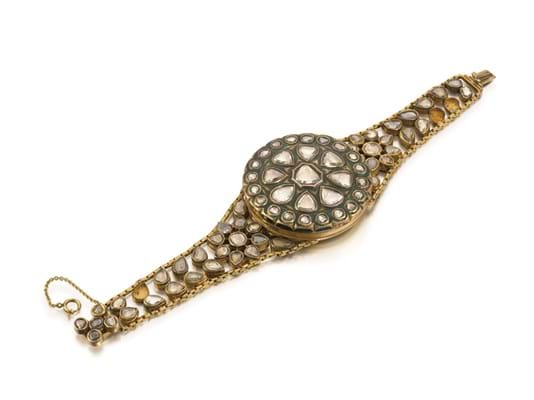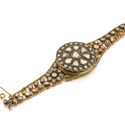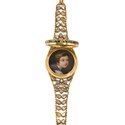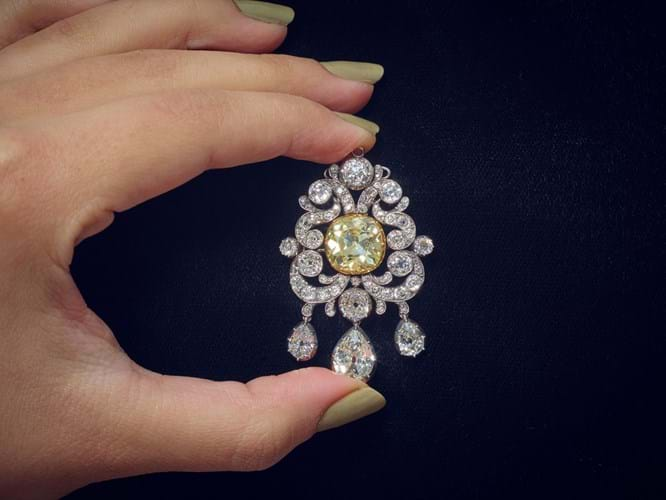
The sale’s 385 lots came from her Newhouse home in Mersham, Kent and were consigned by the family which has now moved out from the 18th century estate. The collection took a marathon 11 hours to sell in total, with the final tally coming to £5.6m including premium.
The collection featured furniture, sculpture, Chinese works of art, silver, ceramics, Objets d’Art and even a classic car – a Jaguar 420 built to special order for her father Lord Mountbatten, the last British Viceroy of India, which surpassed a £10,000-20,000 estimate and sold for £100,000 (or £126,000 with premium).
Some of the best competition came among the pictures and jewellery. Among the top lots was a piece known as the Banks Diamond. A late 18th century brooch with a cushion-shaped yellow diamond, it had been given to explorer and botanist Joseph Banks by his sister Sarah around the time of his marriage in 1779. Estimated at £40,000-60,000, it drew strong interest and sold for £110,000 to a UK-based buyer.
Items with a royal connection did especially well. A group of four pieces of mourning jewellery belonging to Queen Victoria, Patricia’s great-great-grandmother, all well exceeded their estimates, bringing a combined £80,000. Meanwhile an Indian bracelet carrying a miniature of Prince Albert as a boy (the portrait by Henry Pierce Bone) and worn by Queen Victoria when she informed her ministers of her intention to wed, surpassed a £4000-6000 estimate and sold for £32,000, also going to a UK-based buyer.
Portraits bring demand
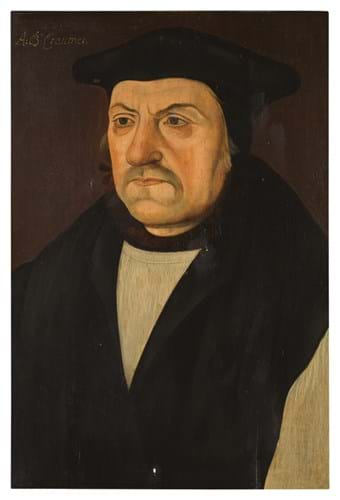
A portrait of Matthew Parker, Archbishop of Canterbury, an oil on panel catalogued as by a ‘follower of Hans Holbein the Younger’. It sold for £150,000 at Sotheby’s.
Some spectacular competition also came for a couple of Old Master portraits.
A portrait of Matthew Parker (1504-1575), the Archbishop of Canterbury, which was catalogued as by a follower of Hans Holbein the Younger (1504-1575) soared to £150,000, more than 50 times its estimate of £2000-3000.
Although it carried an incorrect inscription identifying the sitter as another Archbishop, Thomas Cranmer, the features and composition resembled that of another portrait of Parker now at Corpus Christi College, Cambridge. While another Flemish school portrait of Parker can be found at Lambeth Palace, the Sotheby’s catalogue suggested that the both the current work and the Corpus Christi picture appeared to be based on a lost original by Hans Holbein the Younger.
The picture had some varnish to the surface and scattered retouching but Sotheby’s said “it was the provenance and the identity of the sitter that led to the determination of the bidders, rather than the attribution”.
It sold to UK-based private collector and was underbid by another private collector.
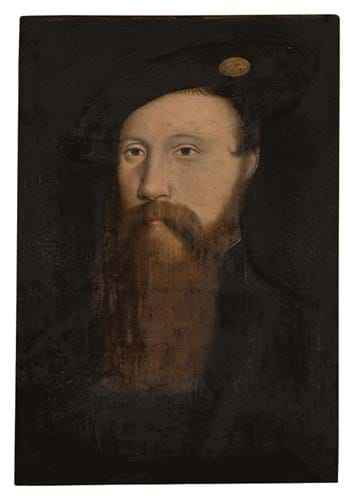
A portrait of Thomas, Lord Seymour of Sudeley, catalogued as ‘English School, 16th Century’. The oil on panel sold for £75,000 at Sotheby’s.
Another bidding battle broke out for a portrait of Thomas, Lord Seymour of Sudeley (c.1508-1549) which was carried to £75,000 against a £4000-6000 estimate. In his 1969 work Tudor and Jacobean Portraits, art historian Roy Strong believed the oil on panel to be one of a number of workshop repetitions after a lost original, possibly by William Scrots.
The sitter was a key figure in the Tudor court. He was the brother of Henry VIII's third wife, Jane Seymour, and uncle of Edward VI, as well as second husband of Henry VIII's last wife Catherine Parr.
It has been suggested that this picture, together with at least two other known versions of the image (another portrait by an unknown artist in the National Portrait Gallery and a miniature in the collection of the National Maritime Museum), may depict the sitter at the time he married the king's widow and was made a Knight of the Garter.
It sold to a separate UK collector and was again underbid privately.


